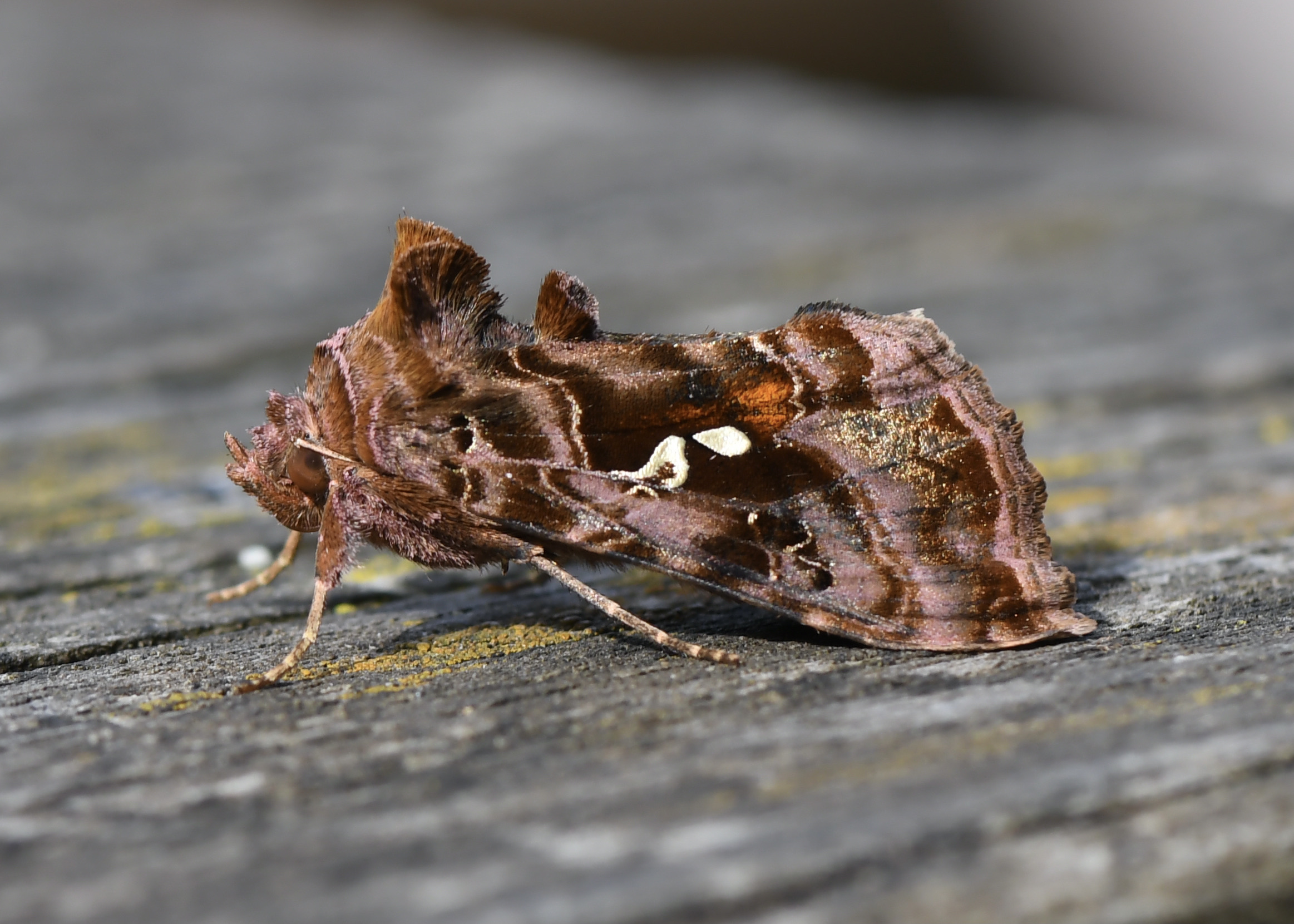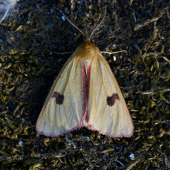Discovering the Moths of Selborne - Review of 2022
Moths are sensitive indicators of the health of the natural environment and a vital part of the food chain; something which did not escape the attention of Gilbert White as early as the 18th Century.
This year we continued our monthly series of moth recording events, where the public were able to enjoy seeing moths during the most active part of the season.
Once the sun had set, visitors had the opportunity to discover the ecology of moths and the scientific recording of moths. Visitors then learned about how moths are studied, including how a selection of those species are observed in Selborne, which provided them with the skills to help identify the moths present at the light lures.
The night sessions also provided a fantastic experience to become immersed in the twilight and nocturnal life of the grounds that lie beneath the Selborne Hanger. Spotting bats speeding past and listening to the owls hoot from the trees are particular highlights.
In addition to those moths recorded on the night, those retained in the light lures were examined in the morning and recorded on the Hampshire Biodiversity Information Centre database for use by Butterfly Conservation and others to support scientific research into insect ecology.
The Results
Just under 1,000 moths were observed during the sessions this year, representing 205 species. Of these, 65 species (31%) were seen during more than one recording session, either as a result of their flight times or, for some, because they have more than one brood during the year. July tends to offer the greatest selection, although June and August can bring challenges from the sheer volumes of moths to record!
As for butterflies, different species have a different lifecycle timetable so when some are in adult stage others may be in egg, larva or chrysalis stage. A significant majority of moths in the UK achieve adult stage at least once during late Spring to early Autumn but, as for butterflies, some over-winter in an adult form.
Unlike most butterflies several species emerge as adults to fly from late Autumn to early Spring. Native species are supplemented each year by migrants normally flying from the South.
Over three-hundred and seventy species of moths have been observed in Gilbert White’s garden in recent years. A number of moth species new for the garden were observed this year, contributing to that total either because of co-incidence of survey timing, environmental conditions (eg temperature, moon phase) or because of changes taking place in the distribution or abundance of some species.
Among the new species, the session in June produced a Clouded Buff which is more often in Hampshire seen in a heathland context such as the New Forest or the heaths to the North East of Hampshire.
July brought a new Nationally Scarce (Nb) moth, the Ethmia quadrillella, a ‘micro-moth’ first recorded in North Hampshire in 2020. It is likely that there were other records across Hampshire this year. The larvae feed on Comfrey and Lungwort both found in the garden.
In the morning, we also found an Olive Crescent (Trisateles emortualis). This is described as a rare Red Data Book species resident in some broad-leaved woodland in Southern England. Historically records in Hampshire have been considered as migrants, but more recently the species appears to be establishing a breeding population. See https://butterfly-conservation.org/news-and-blog/rare-moth-on-the-move from Tony Davis back in 2013. More have been spotted this year, but it was a first for Selborne and GW recording, which is always exciting. The larvae feed on Oak and Beech.
One example of a new moth in the September session was Orange Sallow. The species does not often ‘come to light’ but can also be attracted with a sugar mixture on the larval food plant, Lime. This September we sugared the only Lime tree in the garden and the moth was seen near the obelisk quite close to the Lime and a light lure.
Insect decline in the UK
Altogether it was another year of interesting observations in the garden. To a high degree of certainty, scientists have shown with data, that there has been a significant overall reduction in the number of insects in the UK over the last 50 years. The causes of this are complex but largely well understood, and not limited to changing farming practices and habitat loss. Climate change appears to be adding a layer of complexity.
At a more detailed level, prospects for individual species can vary enormously, with some insects increasing in abundance and distribution, (at least in the UK), whilst prospects for others are on a negative trajectory. It is not possible to draw any conclusions or likely trends from recorded data from Selborne alone, but these data sets contribute usefully to the County and National data with which more robust analysis can be undertaken.
In the meantime, Gilbert White’s garden is managed sympathetically for wildlife without chemicals and alert to the needs of the species that could potentially be supported in the habitats. It was brilliant to see that those who attended the Moth Nights developed further curiosity into the actions that they themselves can take to support butterflies and moths.
By Chris Piper - moth night session expert at Gilbert White's House & Gardens

Privet Hawk-moth (Sphinx ligustri)
GW Garden 11th June 2022

Beautiful Golden Y (Autographa pulchrina)
GW Garden 11th June 2022

Buff-tip (Phalera bucephala)
GW Garden 11th June 2022

Clouded Buff (Diacrisia sannio)
GW Garden 11th June 2022

Ethmia quadrillella
GW Garden 22nd July 2022

Olive Crescent (Trisateles emortualis)
GW Garden 22nd July 2022

Orange Sallow (Tiliacea citrago)
GW Garden 17th September 2022
